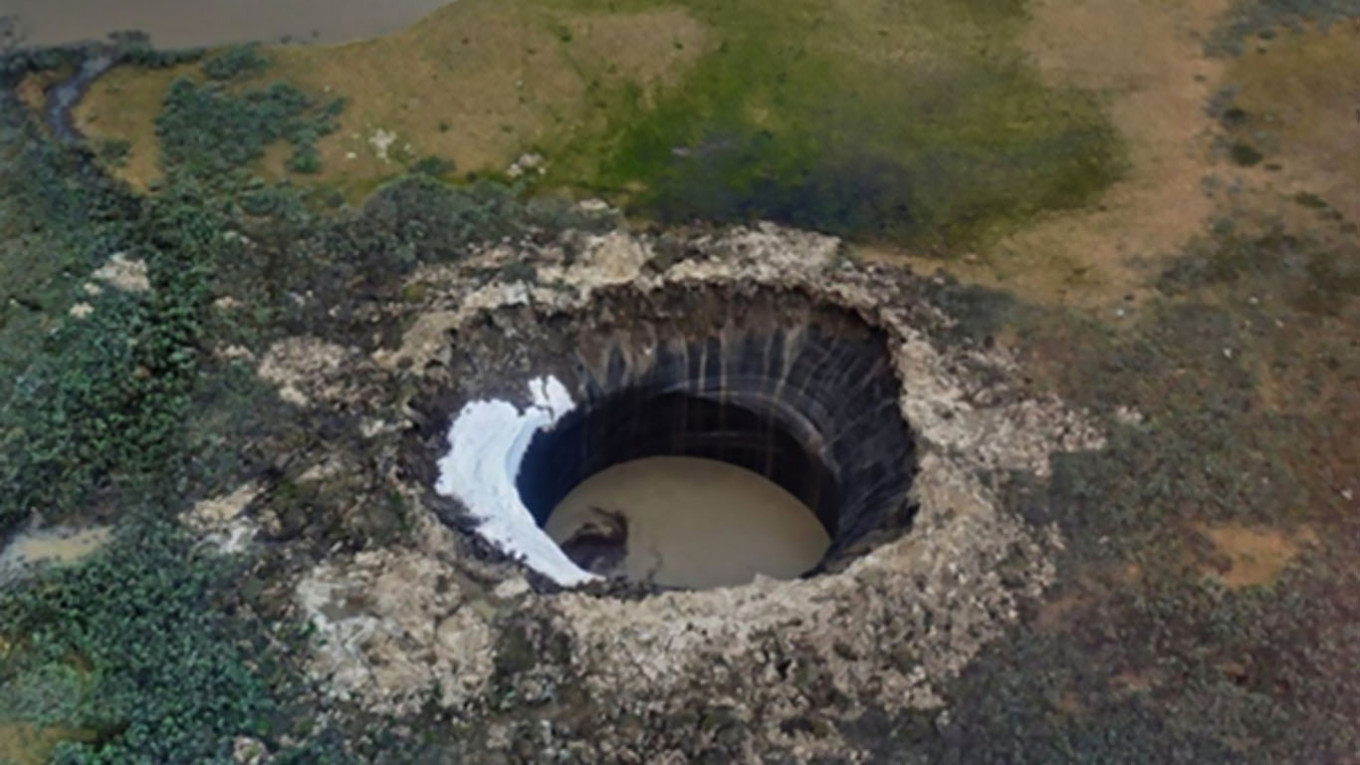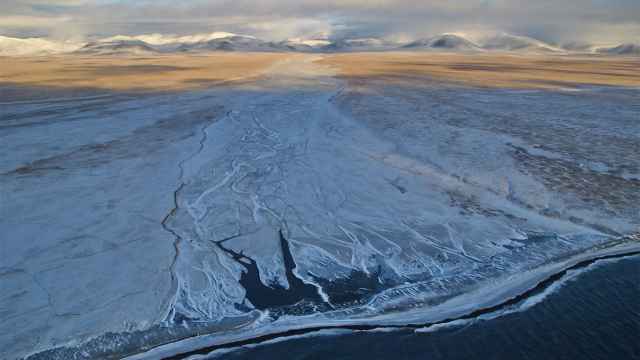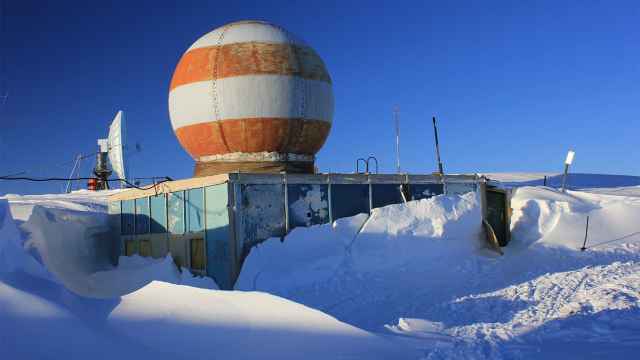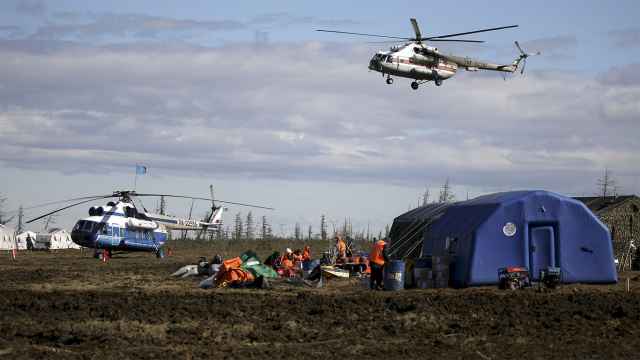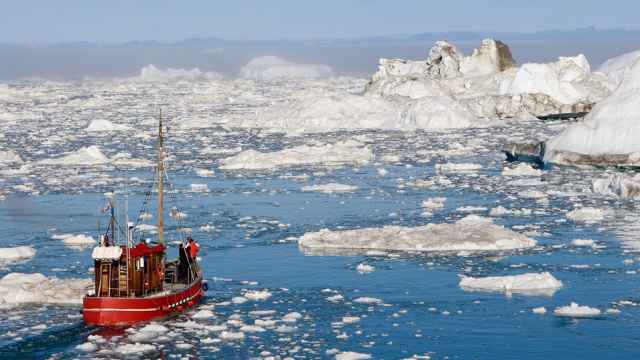Russian scientists believe that a massive crater above the Arctic Circle described as a “pit to hell” was formed as a result of an explosion caused by built-up methane.
The researchers based their conclusions on a 3D model they created from drone footage from inside the well-preserved crater that has not yet eroded or filled with water. Satellite images revealed that the crater formed in Siberia’s extreme northwest between May and June 2020, the researchers wrote in a paper published in the journal Geosciences last week.
The model confirmed scientists’ hypothesis that the crater exploded due to pressure from methane, a greenhouse gas more potent than carbon dioxide.
“The increase in gas pressure in the underground cavity led to the growth of a mound in its arched part, which eventually led to the rupture of the top,” the authors wrote.
Gas, ice fragments and frozen soil scattered across the remote Yamal Peninsula as far as 200 meters from the explosion site, the researchers said. They warned, based on previous studies, that the crater could experience “repeated powerful gas blowouts.”
The “pit to hell” was dubbed Crater 17 (C17) as 16 similar objects have been discovered in the region since 2013. Moscow’s Skolkovo Institute of Science and Technology, whose researchers took part in the August 2020 expedition that modeled the object, noted Monday that there are 20 known and studied craters to date.
“Our results suggest unequivocally that the crater was formed endogenously, with ice melting, a heaving mound dynamically growing due to gas accumulation and the explosion,” study author Igor Bogoyavlensky told Skoltech.
“Climate change, of course, has an impact on the probability of gas blowout craters appearing in the Arctic permafrost,” co-author and permafrost expert Yevgeny Chuvilin told CNN.
Scientists believe that trapped methane is released with the melting of long-frozen earth known as permafrost in Russia’s Arctic and Siberia, which are warming at a faster rate than the rest of the world. The region saw historic summer heat in 2020, accompanied by wildfires that continued burning into 2021 despite sub-freezing temperatures.
However, Dr. Merritt Turetsky, the director of the U.S.-based Institute of Arctic and Apine Research, stressed that “localized heave mounds that explode with buildup of methane are not the same as widespread methane release due to permafrost thaw.“
The C17 researchers still don’t know where the methane came from. According to CNN, the greenhouse gas may have formed in the Earth’s deep layers, closer to the surface, or both.
The team plans to revisit C17 later in 2021 to investigate the gas’ origins.
A Message from The Moscow Times:
Dear readers,
We are facing unprecedented challenges. Russia's Prosecutor General's Office has designated The Moscow Times as an "undesirable" organization, criminalizing our work and putting our staff at risk of prosecution. This follows our earlier unjust labeling as a "foreign agent."
These actions are direct attempts to silence independent journalism in Russia. The authorities claim our work "discredits the decisions of the Russian leadership." We see things differently: we strive to provide accurate, unbiased reporting on Russia.
We, the journalists of The Moscow Times, refuse to be silenced. But to continue our work, we need your help.
Your support, no matter how small, makes a world of difference. If you can, please support us monthly starting from just $2. It's quick to set up, and every contribution makes a significant impact.
By supporting The Moscow Times, you're defending open, independent journalism in the face of repression. Thank you for standing with us.
Remind me later.


